Pentax Auto 110 Lenses
Pentax announced the Pentax Auto 110 in 1978 for the 110 film with three lenses:
18mm f/2.8, 24mm f/2.8 and 50mm f/2.8.
Later in 1981 Pentax added three more lenses:
18mm f/2.8 Pan Focus (focusing using hyperfocal distance),
70mm f/2.8 and
20-40mm f/2.8.
The Pentax Auto 110 has an image size of 17×13mm,
which is smaller than that of the 135 film (36mm×24mm)
and APS-C format (23.6×15.7mm)
and is approximately the same as that of the Four-Thirds system
(17.3×13mm).
Thus, the image circle produced by any one of these six lenses
is too small to be used on 135 or APS-C bodies.
Moreover, the flange distance of the Pentax Auto 110 is 27mm,
shorter than any commonly seen SLR/DSLR.
Only those mirrorless cameras (MILC) may be able to use this set of lenses
in terms of flange distance.
I chose Sony NEX5 because I had and still have this MILC in hand.
Forget about the Pentax K-01 because its flange distance is the same as
that of any Pentax DSLR.
The Sony NEX5 uses Sony E-mount and has a flange distance of 19mm
and an APS-C sensor (23.4×15.6mm).
The only problem with the Sony NEX5 is that
its sensor size is 1.65X larger than that of the 110 film.
As a result, some border and corner areas will not be covered
by the Pentax Auto 110 lenses,
and even though the image circle of a Pentax Auto 110 lens
is large enough to cover the Sony NEX5 sensor,
the image quality will not be as good as the area
of the 110 film and vignetting will occur.
The image below was taken using a Sony NEX5 and the yellow frame
shows approximately the area of the 110 film.
Since the Pentax Auto 110 lenses are not supposed to support the area
outside of the yellow frame, the image qualify in that area will
be lower.

The image below shows five Pentax Auto 110 lenses and a non-Pentax teleconverter, the missing one being 18mm f/2.8 Pan Focus as it is not used in this article. The front row from right to left has Pentax-110 50mm f/2.8, Pentax-110 24mm f/2.8, Pentax-110 18mm f/2.8 and Soligor 1.7X teleconverter which is not part of Pentax 110 lens lineup but it is the only teleconverter available for the Pentax Auto 110 lenses. The back row from left to right has Pentax-110 70mm f/2.8 and Pentax-110 20-40mm f/2.8.
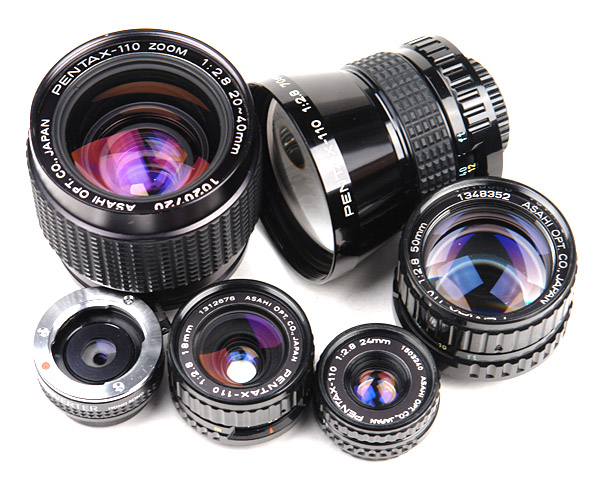
Since the 110 film size is approximately the same as that of the Four-Thirds system, the crop factor of the Pentax Auto 110 lenses is 2X with respect to the 135 film. Therefore, in terms of angle of view, 18mm, 24mm, 50mm, 70mm and 20-40mm are the same as 36mm, 48mm, 100mm, 140mm and 40-80mm, respectively, on a 135 sensor size camera. Since I used a Sony NEX5, which has an APS-C sized sensor, these lenses are equivalent to 24mm, 32mm, 66.7mm, 93.3mm and 26.7-53.3mm, respectively.
Each Pentax Auto 110 lens only has focusing ring and has no aperture ring, because the aperture is controlled by the camera body. As a result all Pentax Auto 110 lenses can only be used at their maximum aperture f/2.8.
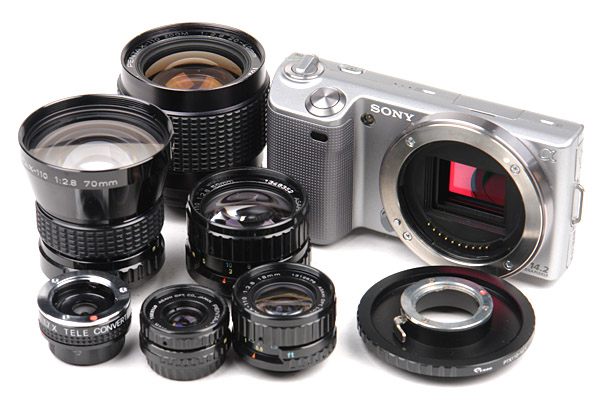
The image below shows this adapter on my Sony NEX5. The small lever on one side of the adapter is used to lock and release lenses. When it is used with larger lenses (e.g., 70mm and 20-40mm), the bottom of the lens is very close to the outer rim of the adapter, making it not easy to reach the lever. Some rumors circulated on the web claimed that this lever may cause light leaking and some sellers also admitted this issue. Fortunately, my adapter appears to have no problem so far.
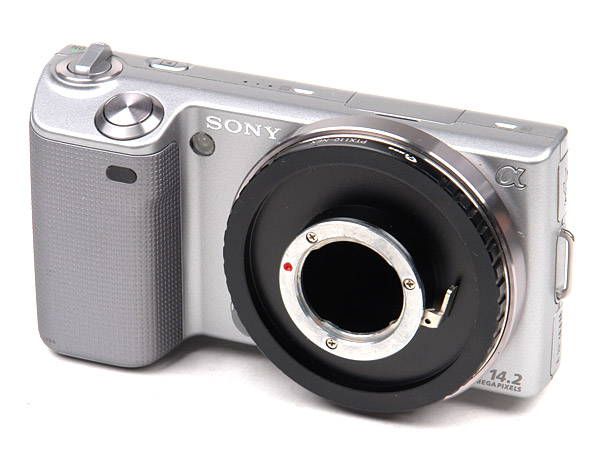
Each of the next few sections discusses a Pentax Auto 110 lens. Images were taken while I was having a long walk around our small town. Since I took a different route every time and only carried one lens with me, these images were not taken at the same location at the same time. Most images were only resized and sharpened, and a few of them may need to adjust exposure slightly.
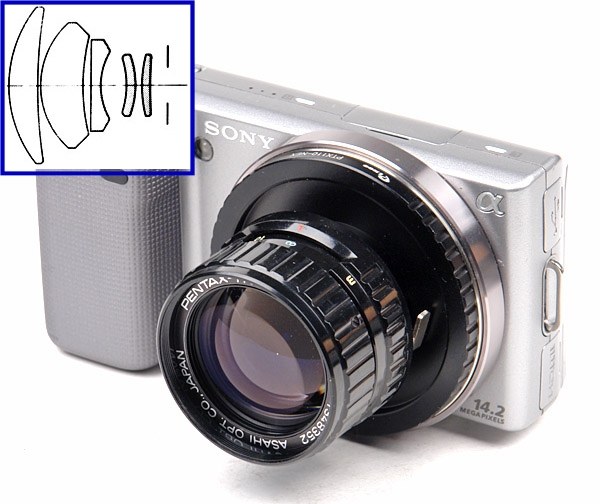
The next four images were taken while I was walking around town. The second one shows the work of a local chainsaw carving artist.


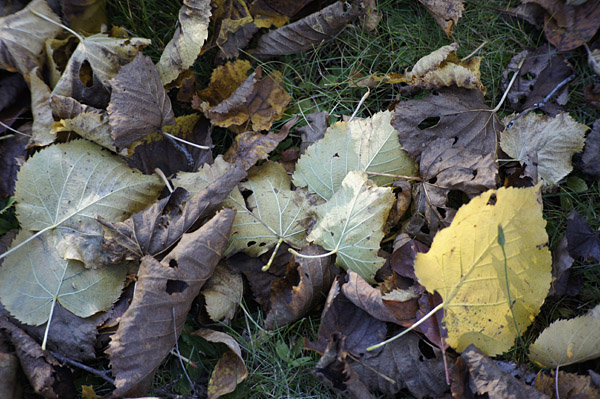

Here are more images. These images show that the color rendition of the Pentax-110 50mm f/2.8 is not vivid, in fact somewhat less saturated as the images taken by modern lenses. Contrast is also lower. Additionally, the edge area and corners are soft as this area is not supposed to be covered by a 110 lens.
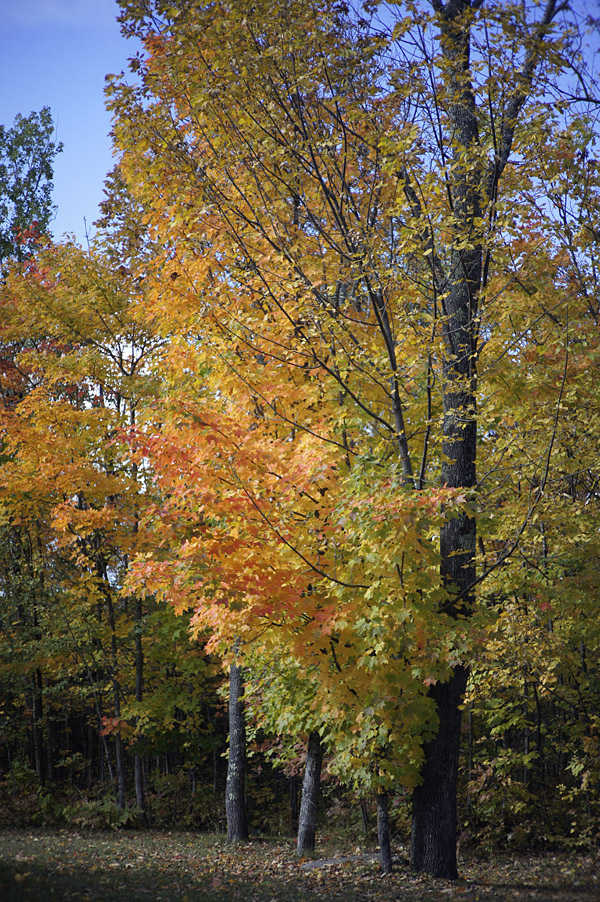
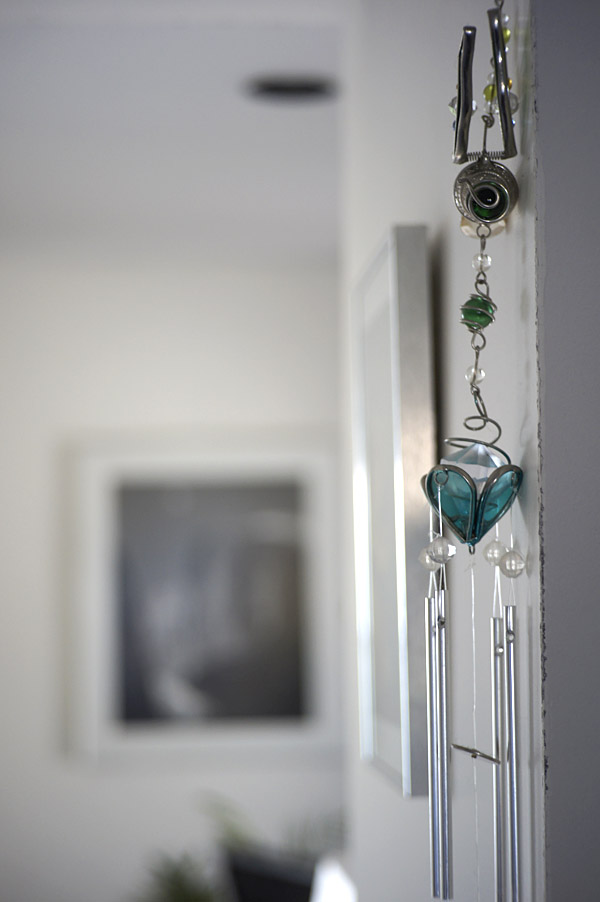
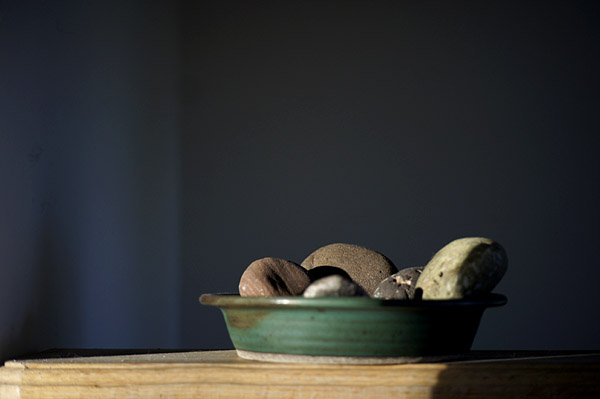


We next look at the performance out of focus area of this lens. The second image below is a 600×600 crop from the first. It is clear that the border of an out of focus bright spot is brighter than its interior and has some odd color. Hence, the bokeh of this lens would be not so pleasing as shown in the center left and lower center areas.

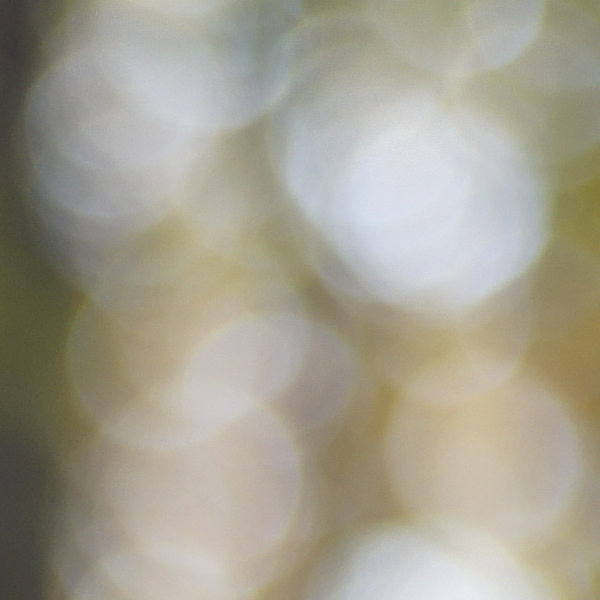
Pentax-110 lenses do not have SMC anti-reflection coating. But, the reflection of the glass surface indicates that some kind of anti-reflection coating has been applied. The image below shows an example. Some out of focus spots show nearly transparent interior with bright border, which is a symptom of poor bokeh. Moreover, the image also exhibits serious ghosts as shown in the second and third 100% crops.
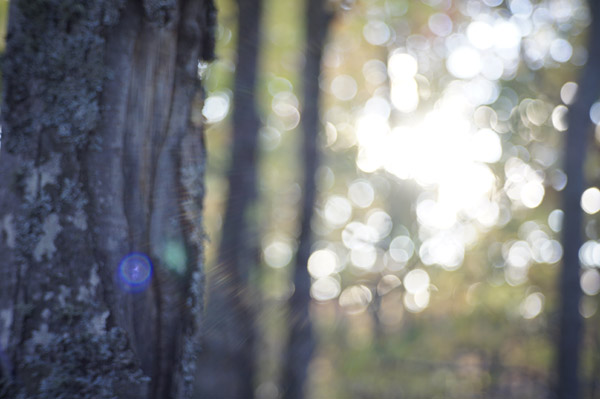

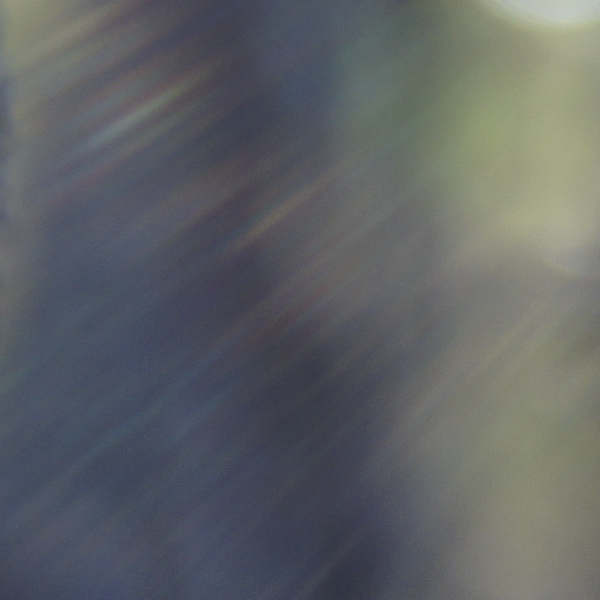
The image below shows the problem of vignetting. Please do keep in mind that since this lens is designed for the 110 film rather than for the APS-C film or sensor vignetting on a Sony NEX5 is unavoidable. Using it on a Micro 4/3 body should produce better results.

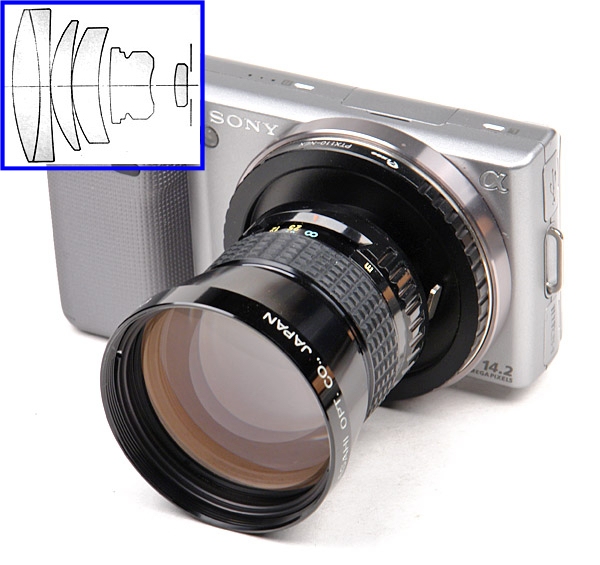
The next two images show early autumn colors. The color rendition seems good but not saturated and vivid enough.

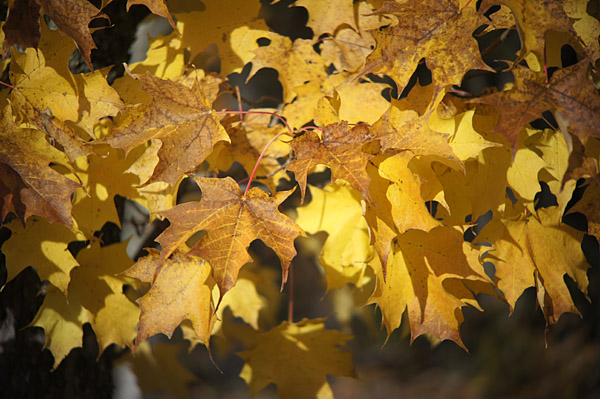
I took this lens for a long walk and tried to snap whatever I thought to be interesting. The first image below shows where I live and the second and third show WalMart in our small town. As you may notice, the color rendition is a bit dull in addition to vignetting.
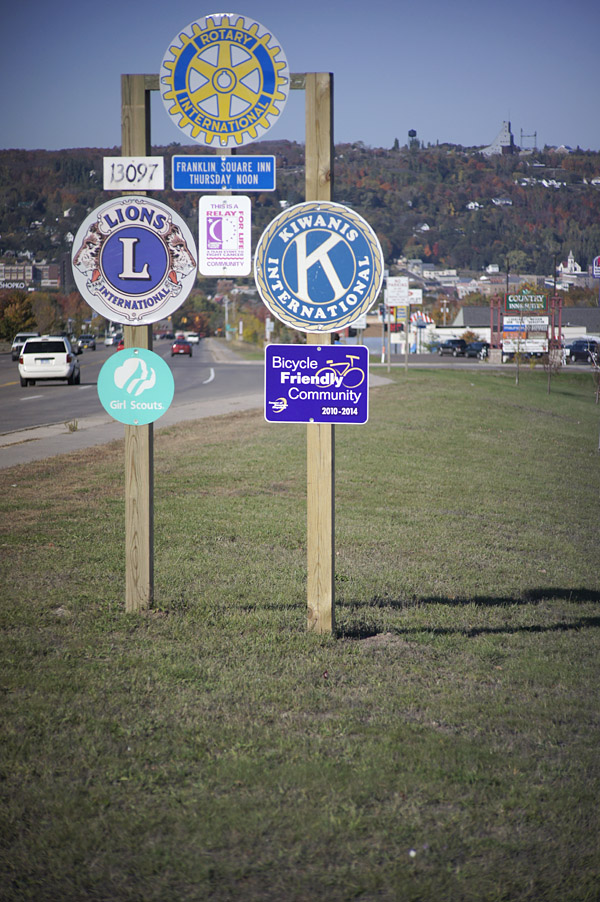


I passed by the house of our local chainsaw carving artist again and snapped the following image. Composition is kind of bad because the evening sun made my Sony NEX5's LCD useless.

The following shot is our local firefighters station and a statue in memory of those who gave their lives. The second and third have the squad flags, showing the vignetting pattern of this lens.



Halloween was coming to town and this is the evidence:

This is my cat:
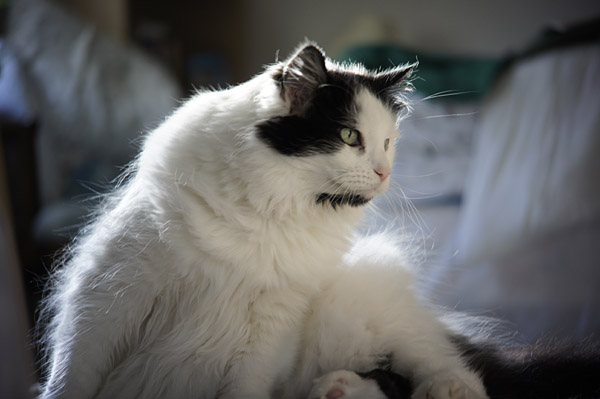
Because Pentax-110 70mm f/2.8 has a longer focal length than the Pentax-110 50mm f/2.8, its out of focus performance is also a bit smoother as shown in the first image below. However, the double-lined effect is still an issue as shown in the right side of the second image. Moreover, the cat-eye effect and swirl bokeh can also be seen in the third image although they are not as serious as those produced by a Petzval type lens.


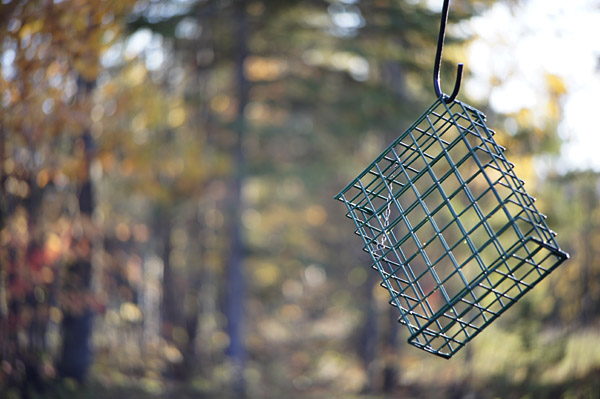
IMO, Pentax-110 70mm f/2.8 is not as good as Pentax-110 50mm f/2.8 on a Sony NEX5 because (1) vignetting is more serious than that of the 50mm, (2) color-rendition is not as vivid/saturated as the 50mm and a brighter scene can quickly reduce the image contrast, (3) the minimum focus distance of the 70mm is longer than that of the 50mm, and (4) the 70mm is larger and heavier than the 50mm. As a result, I personally like the 50mm more than the 70mm.
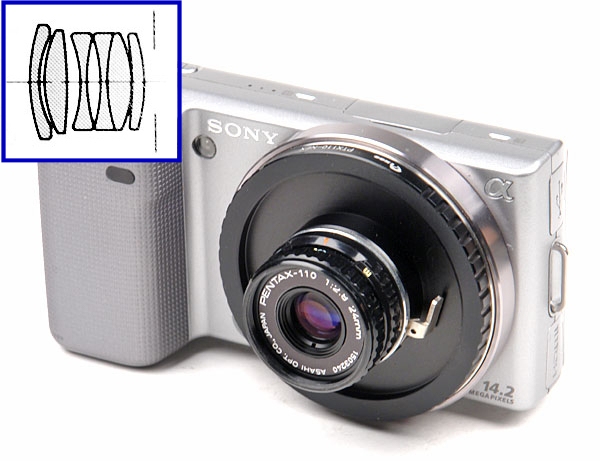
The following images were all taken while I was having a long walk. The first one is a landmark of our town, the Portage Lake Lift Bridge connecting Hancock and Houghton in Michigan.

Two houses in town:

Another local firefighters and rescue station in town:
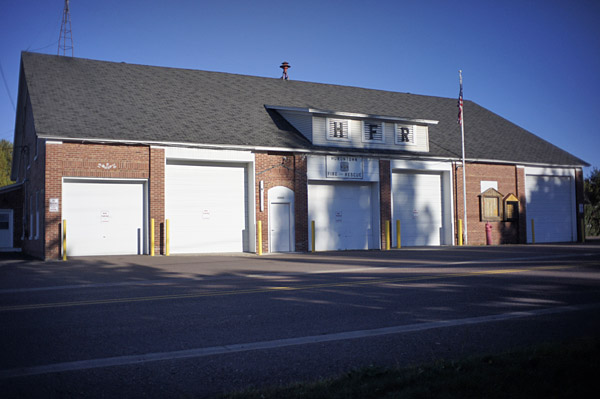
Local park:
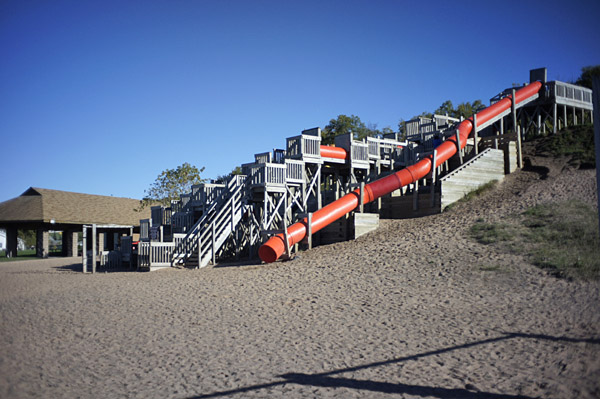
Foot tunnel beneath highway M26:
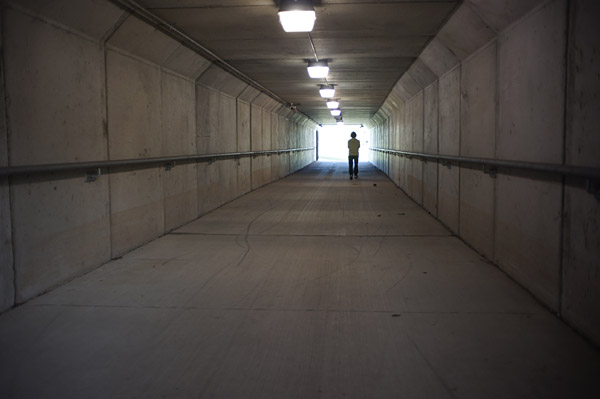
This is WalMart again taken at approximately the same location. Please compare this with the images shown earlier.

Someone was selling a track for $925.

Two more images in my backyard:
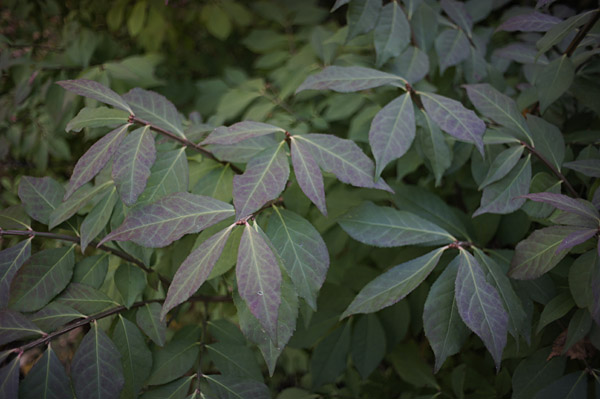

Then, let us take a look at the out of focus performance of this lens. The first image is the original and the second is a 600×600 crop of the center area. The performace of this 24mm is not as good as the previous two as each of the out of focus bright spot has a bright and colored border. This suggests that the bokeh of this lens cannot be good and the double-lined effect will occur.

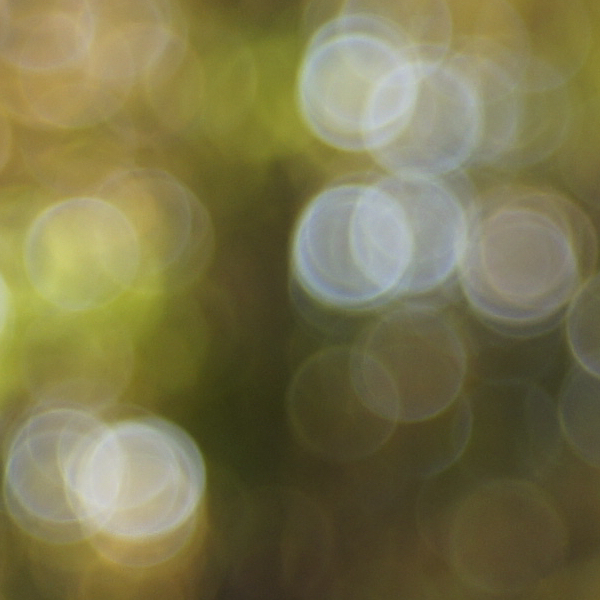
Here is one more example. Each out of focus grass image is reproduced with a semi-transparant bar with two bright edges (i.e., double-lined image).


It is expected that Pentax-110 24mm f/2.8 cannot cover the whole sensor area of the Sony NEX5 with good image quality. The first image below is a good example. The second is a crop of the lower left corner, which is very soft, and the third is a crop of the center, which is again not satisfactory. Reason? I really don't know. Perhaps it is because this image was taken with the largest aperture or it is because the Sony NEX5 out resolves this Pentax lens. Please keep in mind that resolution of the 110 film is not high and the 110 film was considered as an amature type film. As a result, Pentax did not have a strong reason to produce high resolving power lenses for the Pentax Auto 110.
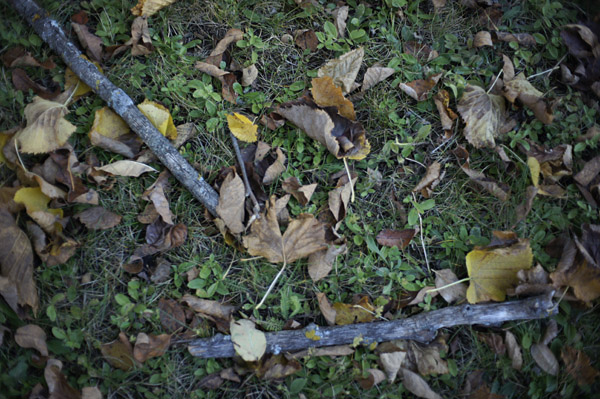
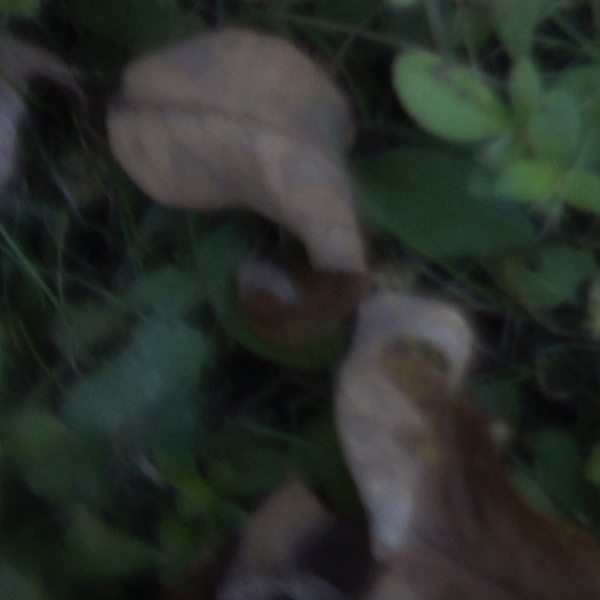
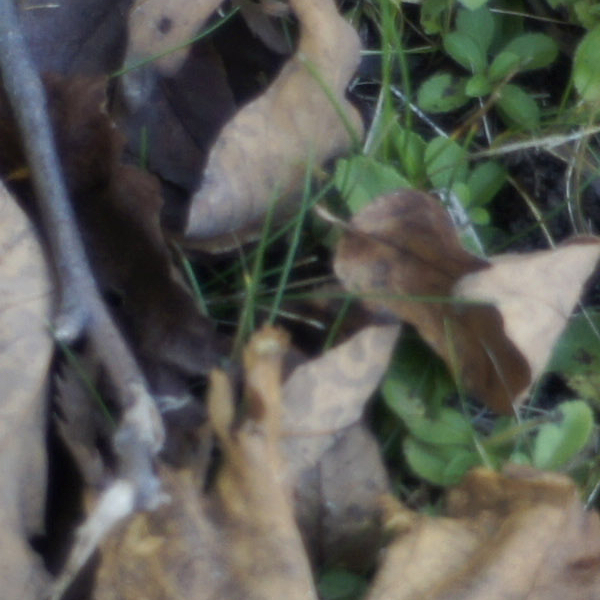
This 24mm lens appears to be better than the 50mm and 70mm in terms of flare and ghost. However, vignetting is poorer than the other two and image quality along the edge is also poor as shown by the images in this section. The following image shows vignetting of this lens:

IMAGE 57
Since the image circle of this 18mm lens is not large enough to cover the Sony NEX5 sensor completely, images taken with this lens have very obvious vignetting and dark corners and also have very soft edge and corner image quality. Most images shown below were only resized and sharpned slightly, the night scenes were taken with reduced exposure (to achieve faster shutter speed) and exposure was corrected in post-processing.
In the first image below, the lower edge (in fact the lower half of the apple) is soft. The second shows very significant dark corners.
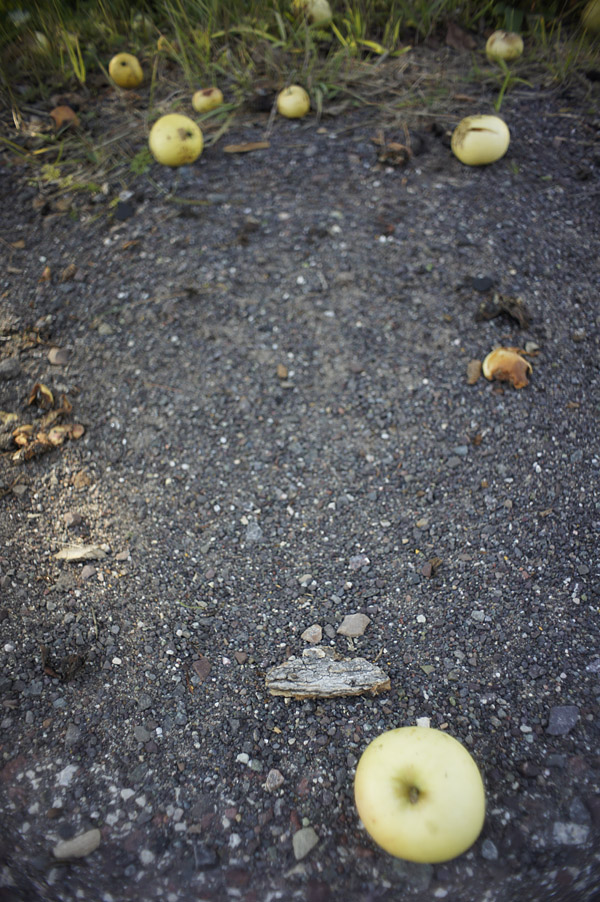

A careful composition can sometimes reduce the impact of vignetting as shown below:


This one was taken in a local restaurant:

The next few images were taken along the lake shore. All of them were shot without the use of a tripod. Note that coma is very obvious around the lights on top of the bridge.
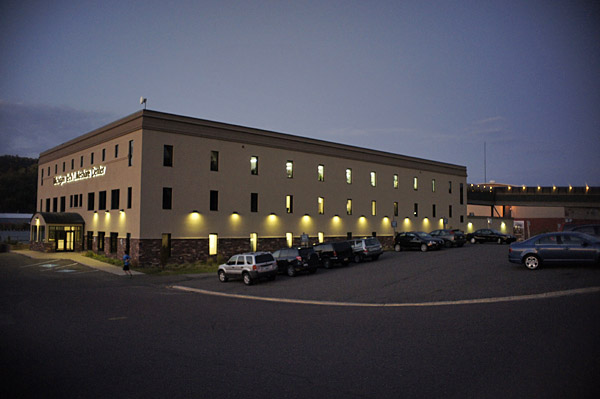
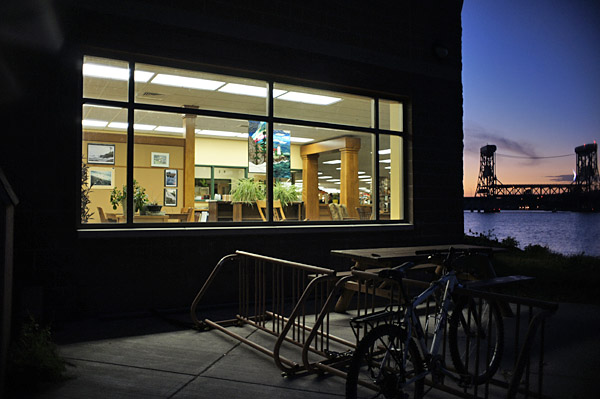
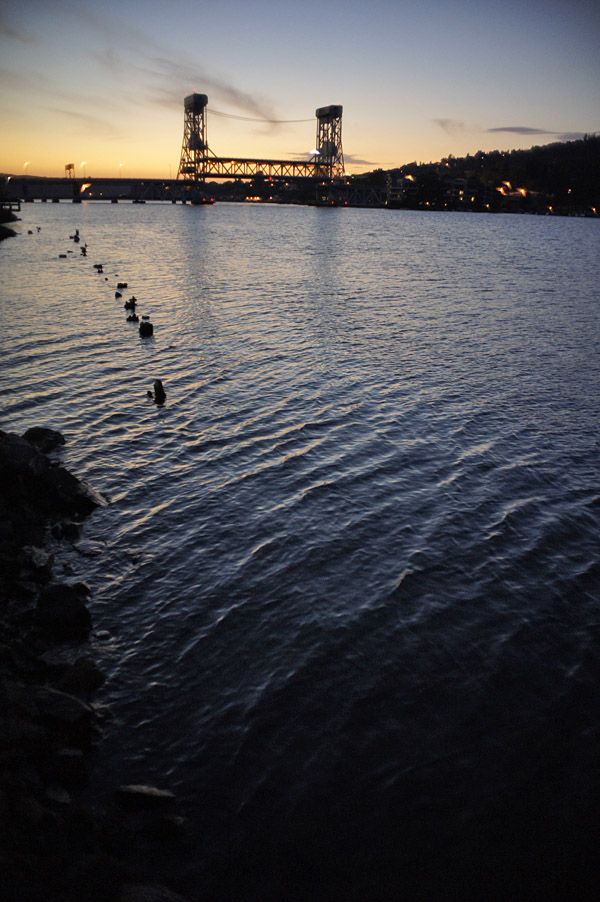
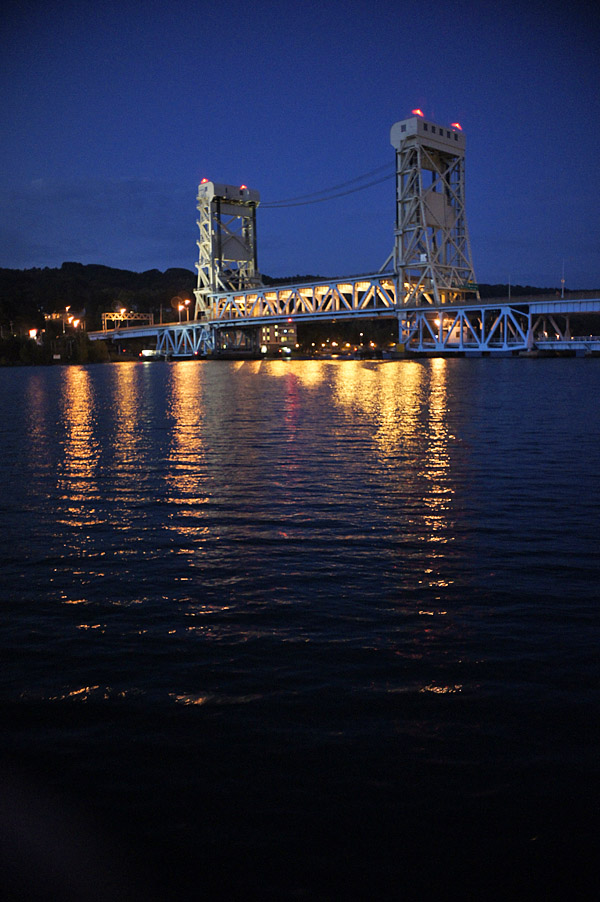
As mentioned earlier, this lens has significant vignetting and dark corners with very soft edge and corners (worse than the 24mm). The first image below is the complete scene, and the second is a 100% crop of the upper right corner which is very soft, but this portion is outside of the 110 film coverage. The third image is a 100% crop of the lower right corner which should be near the edge of a 110 film frame. It is not so bad at f/2.8; however, coma is not controlled well as shown by the reflection of a chair. The fourth one is a 100% crop of the center part of the left edge. This portion is outside of the 110 film frame. Again, coma causes an odd glow along the bright edges of the table.

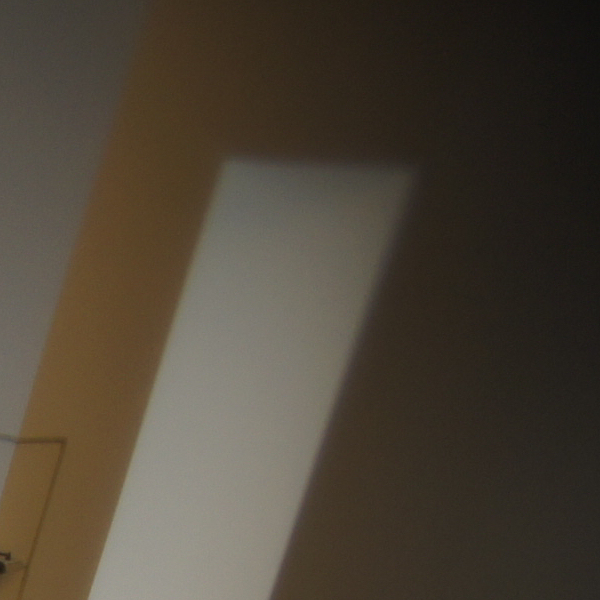


The following images shows the pattern of vignetting of this lens:

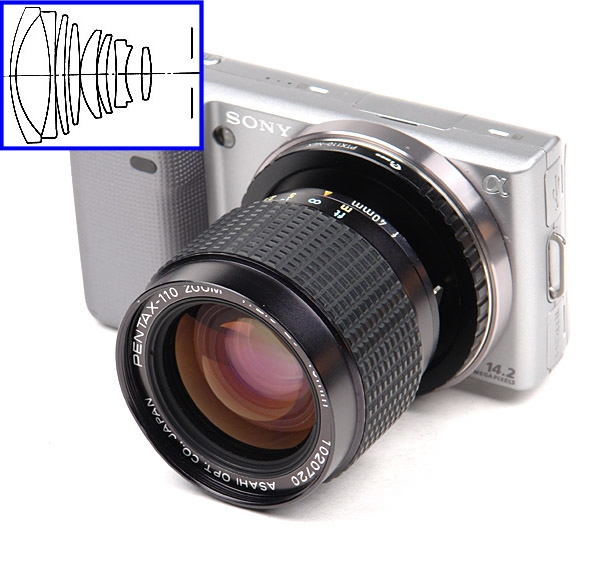
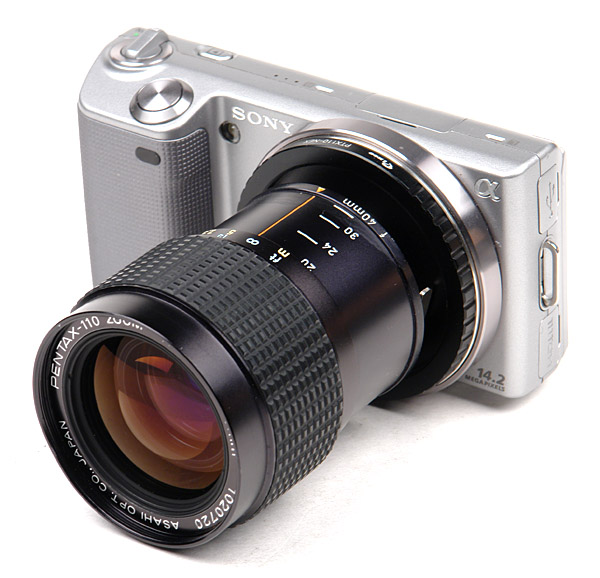
I also took this lens for a walk. The first image below used 20mm and the second used 40mm. It is obvious that the image at 20mm has a significant vignetting and looks soft, while the 40mm one appears to be normal.


The next two images have the new products of our local chainsaw carving artist:


The following three images show our local lakefront trail:
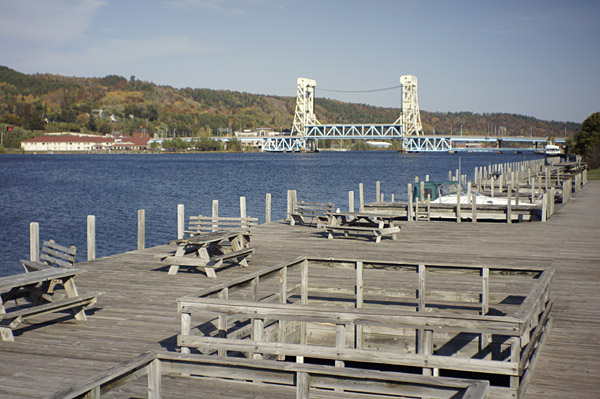
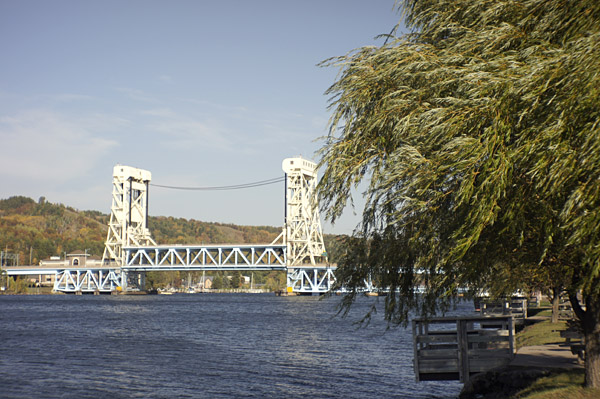

The next four images are the downtown area shops. The first one is the 1860 built Douglas House.



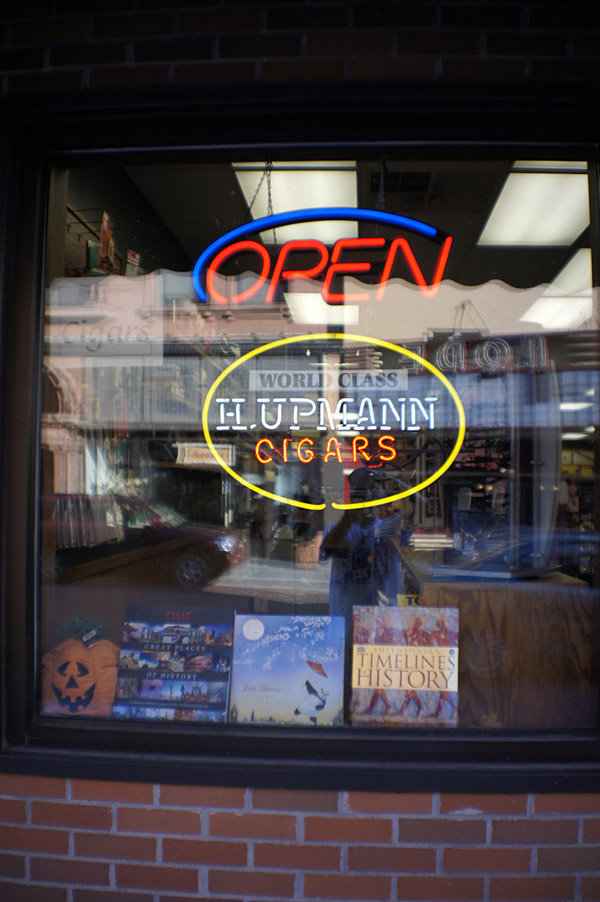
This is a police car parked just outside of the city police station:
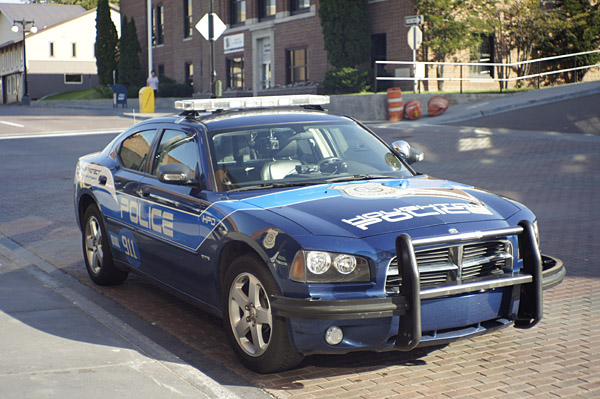
A wedding was going on there:

This was perhaps the last glance of autum leaves. A few days later all leaves would be gone.
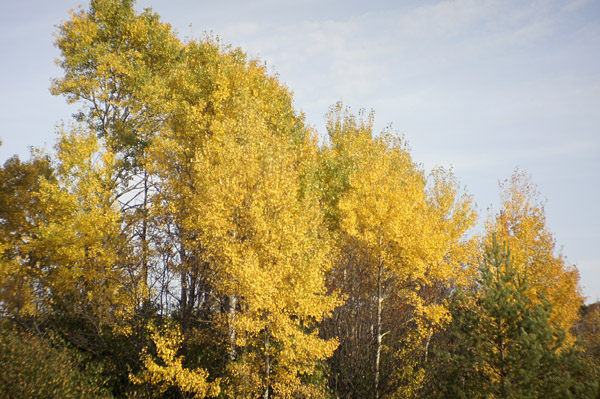
All Pentax-110 lenses performed in similarly, but this 20-40mm seems to be worse with a significant barrel distortion at the 20mm wide end. The first image below was taken at 20mm and the second at 40mm.
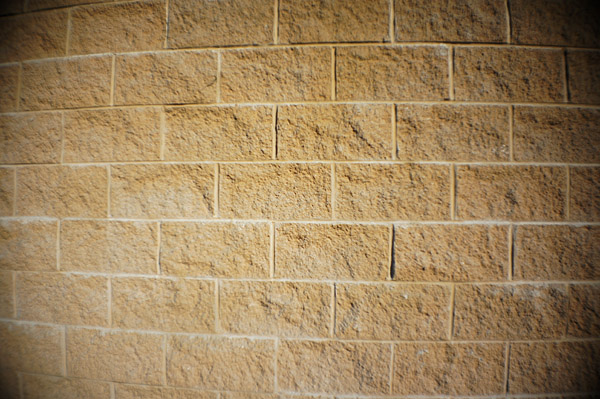

The first image below shows the vignetting pattern at 20mm and the second at 40mm. As you can see, vignetting at the 20mm is very serious. Please do keep in mind, again, that on a Micro 4/3 system the situation should be much better because all Pentax-110 lenses are supposed to cover approximately the 4/3-system sensor.


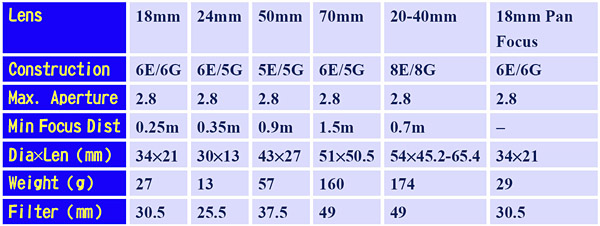
You are visitor
since May 26, 2014
Created: May 26, 2014
Last update: May 26, 2014